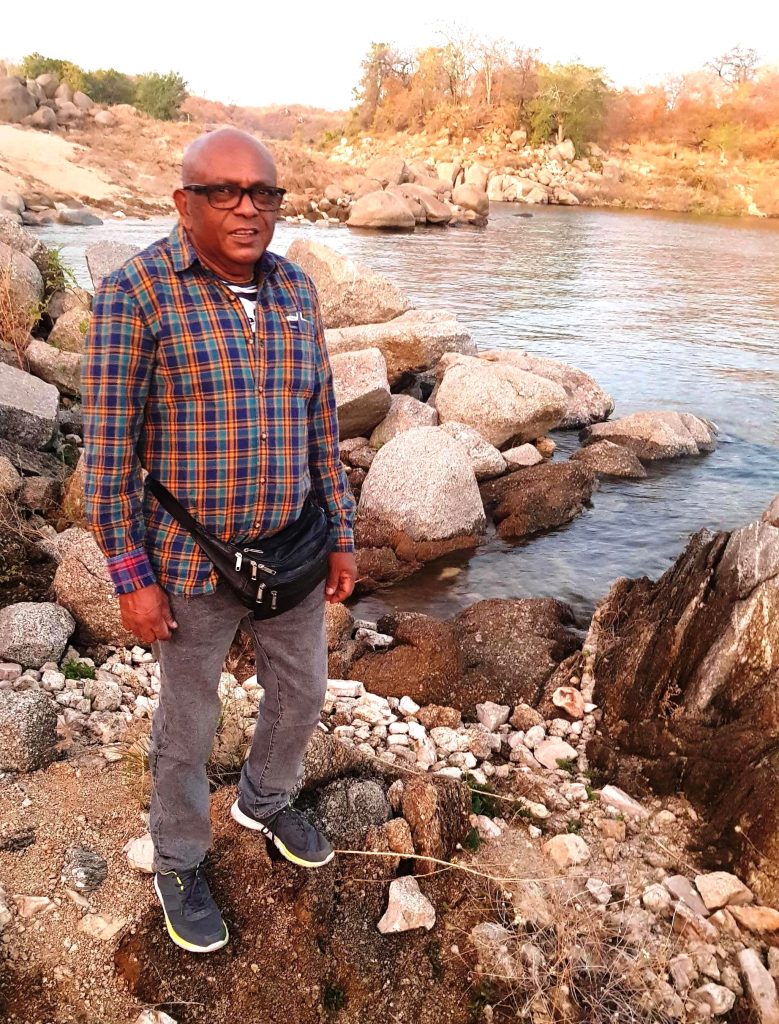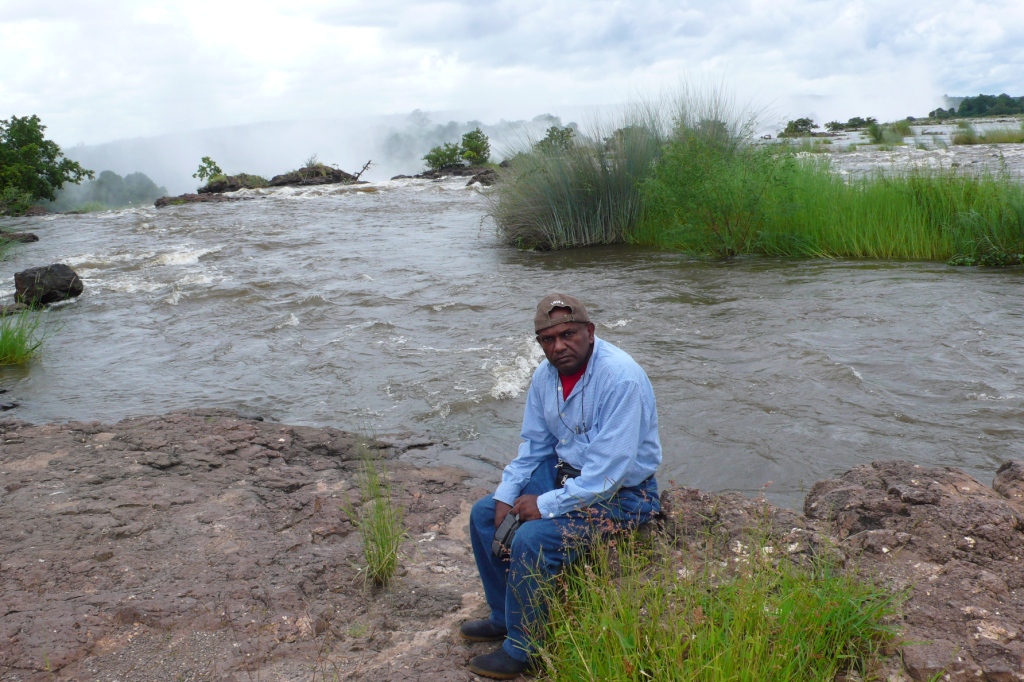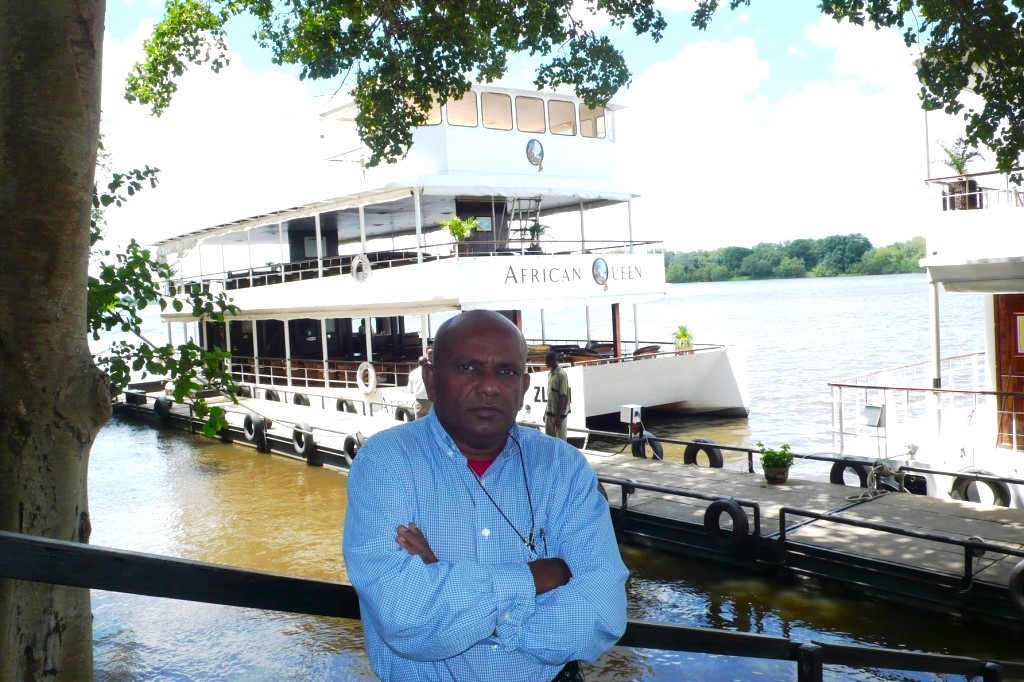On February 29th, 2024, the Zambian President declared the country’s devastating drought a national disaster. His recent national speech revealed that the catastrophe has “affected 84 out of 160 districts across the country.” Pasture availability has reduced for animals, and water levels have also been impacted. He appealed for humanitarian intervention for up to 6.6 million people who are in severe need of food.
Experts say Zambia is getting drier because it now gets less rain (a 2.3% drop in rain every decade), and more evaporation (5 to 10 mm per day over a year).
Biografrica caught up with Ken Seecharran, a highly respected environmental and mining consultant with a deep understanding of the challenges and opportunities surrounding resource management in Africa. Ken, over the years, has done some impressive environmental consulting work across the globe; from the north of the Copperbelt on the Congolese border to some outstanding work in Kenya.

During the chat, Ken highlighted, amongst others, some plausible solutions to the current drought crisis in Zambia that is impacting the Zambezi River, the nation’s energy security, and food production.
The Interest
Drilled on why he is interested in contributing to the resolution of the crisis, Ken gave some highlights of his life as a young man in Zambia where he lived for sixteen years. His language demonstrated the emotional connection with the country he considers his second home. He believes only an engineered solution can resolve this problem that started in 2009, with the current cost of resolution pegged at approximately US$ 7 million, as against US$ 3 million which it would have cost in 2009. He warned this would increase to US$ 10 million in three years, if not tackled now.
According to him, Zambia currently gets eight hours of load shedding per day, and this is regrettable because when he first visited in 1981, they were exporting power to South Africa, Zaire (now Democratic Republic of Congo) and other countries, but they now import power with money the country barely has.
Ken is interested in tackling the root causes of deforestation, which experts say is linked to evapotranspiration and lowered local rainfall as a consequence.

His solution will span about three years to fully manifest and will involve 65 people, creating employment for the locals.
Besides the overarching solution, he is proposing a five-year afforestation plan that he embodied in an eight-page dossier where exhaustive light is thrown on the specific methods and challenges involved. The planting of trees on the bank of the Zambezi forms the core of the afforestation process.
The Solutions
Some of Ken’s proffered solutions are:
- Pushing Back the River
The first solution is to combat half of the Zambezi River because “Kariba dam is roughly midway between the source and the Indian Ocean.” If that’s successful, he will then look downstream of the Kariba dam.
- Clearing The Riparian Springs
The ultimate goal is to recharge the water table by arresting the rain and letting it sink the water table. Consequently, that table is going to flow into the river in the form of springs, which will keep the river fed during drought. “This can be achieved by working their way up, taking a thousand kilometres off the river from the backend, from where the river enters Lake Kariba, all the way to the source, pushing up the soil on the bank of the river,” proffered Ken. He says this will create a bond that will hold back and arrest rainfall. In the dry season, the riparian spring will now release water back into the river.
With this solution, Ken only hopes they will be able to get some extra water into the Zambezi River, into the Kariba Dam and redress the problem.
- Planting of Trees
Ken cannot over-emphasise the fact that one major cause of drought is deforestation. So, replanting trees as a core solution is a no-brainer. While people use trees for all sorts of things, including burning them to produce charcoal, wood and fuel, he stressed they also need to be educated on the adverse effects of these practices on the environment.
According to him, healthy trees help to withstand drought. Therefore, planting them is invaluable, and can be accomplished with serious engagement of the local community, who will be trained on how to plant with specific metres apart. “The trees will have undergrowth capable of trapping water. In four or five years, they will grow enough to start arresting water levels, and build up the water table,” he stated.
- Awareness Campaigns
The use of social media to educate people in remote areas on the dire consequences of deforestation is an added advantage in this day and age.
“This never used to be there in the past when people cut down trees without proper education of the consequences.
“In this social media age, they can be educated on the effects, especially in areas with high water pressure, for example, the Zambezi River catchment area.
“In these areas, the vegetation hardly recovers because the rate of deforestation is higher than the rate of regrowth,” Ken stated emphatically.

Producing Food Amidst the Drought
Ken is advocating for government support to help implement agricultural coping mechanisms with current and future droughts. He had, in the past, practised strategies that worked, which he is willing to replicate in Zambia.
One of the strategies is to let a piece of land fallow throughout the year and plough the weeds and grass that grow into the soil. These ploughed grass and weeds will produce organic matter that will help improve water retention. If this is done three times a year, putting one hectare on rotation, you can build up the soil.
“I would suggest to the government to give us 10 tractors for each district to practise this method and start to grow food even during the dry season, and I’ll convert the country into a food export country,” Ken assures.
Ken also gave respect to whom respect is due: the Mkushi farmers who have been filling part of the food supply chain vacuum. They are water-spraying crops with aeroplanes and their good work recently attracted a visit from the president
“They will fill part of the vacuum in terms of food production, but they need more,” Ken says. Therefore, food importation is inevitable, with the hopes that “genetically modified maize” will not be slipped into the country through the backdoor. He stated that one of the former presidents, Levy Mwanawasa, was vehemently against genetically modified crops.
Message to Africa
In his last message to Africa, he implored Africans to request 10% of profits made when foreign investors do business in their communities. These monies, he says, can be used to build schools, clinics and other infrastructure.

